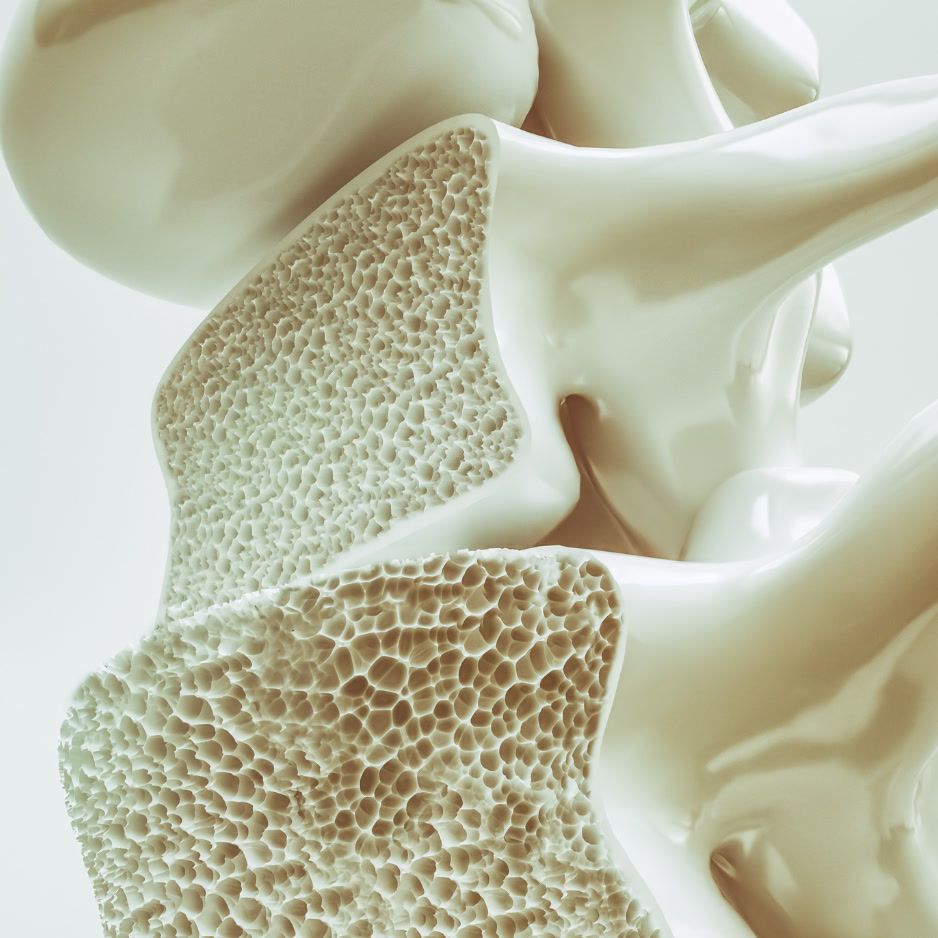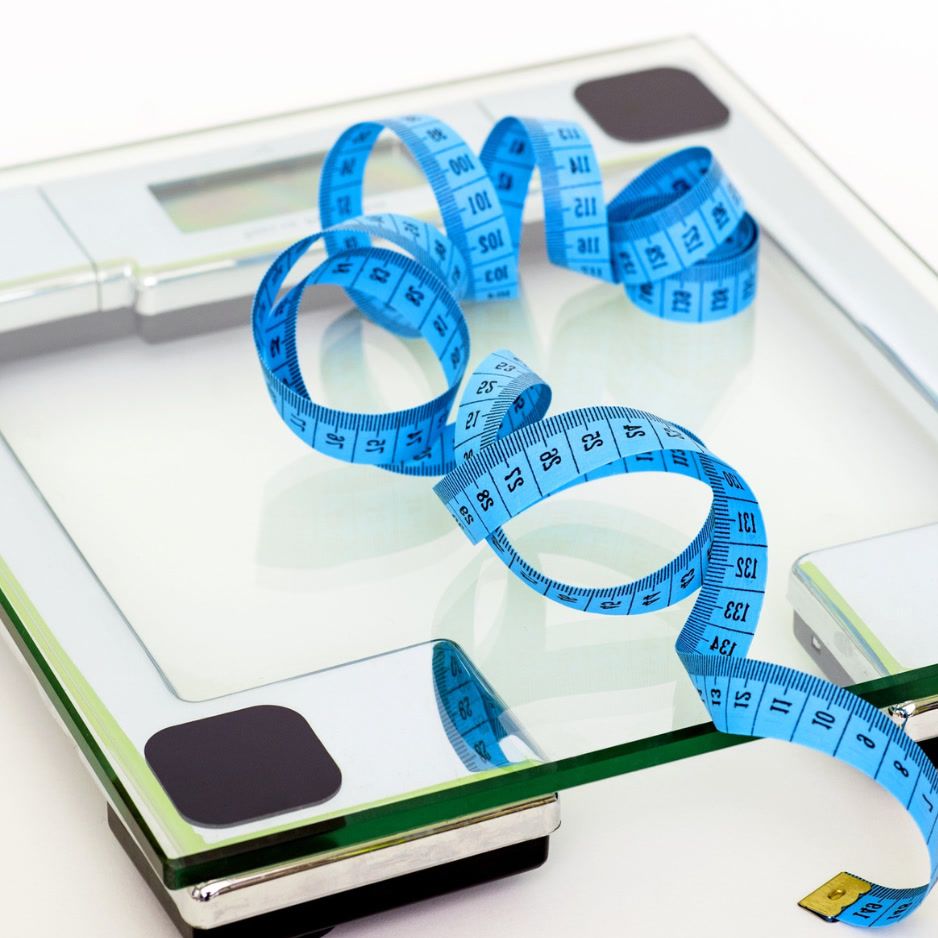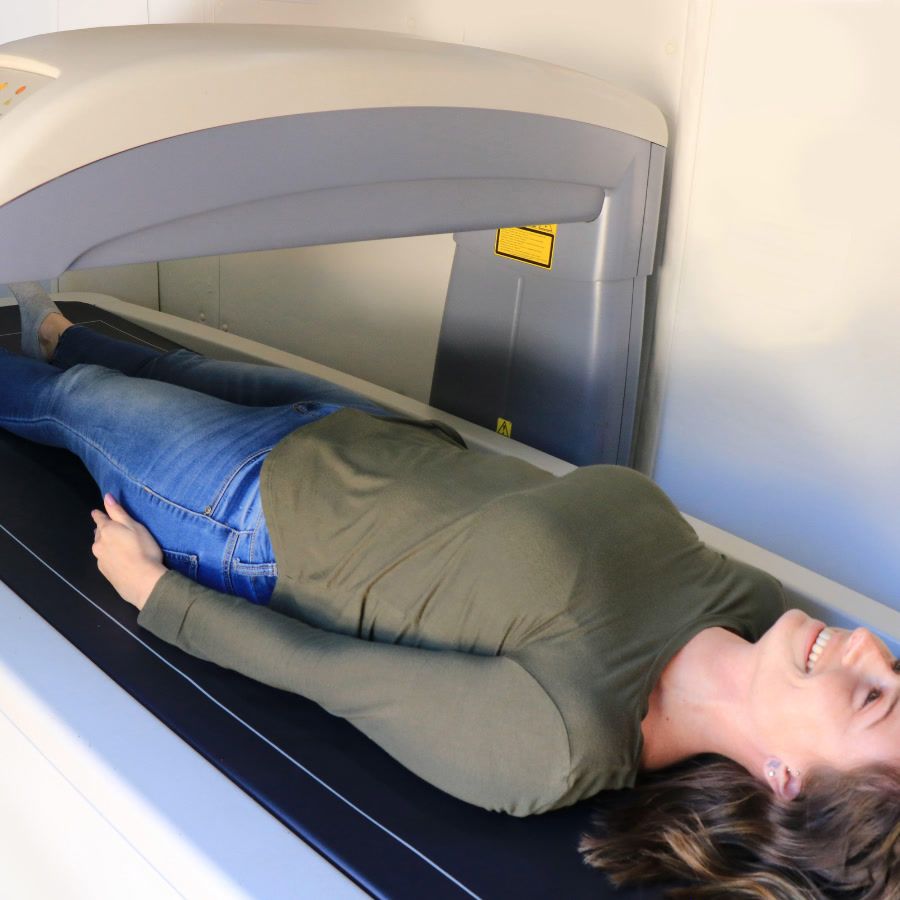How to Get Toned Legs: Workouts, Nutrition, and Tracking
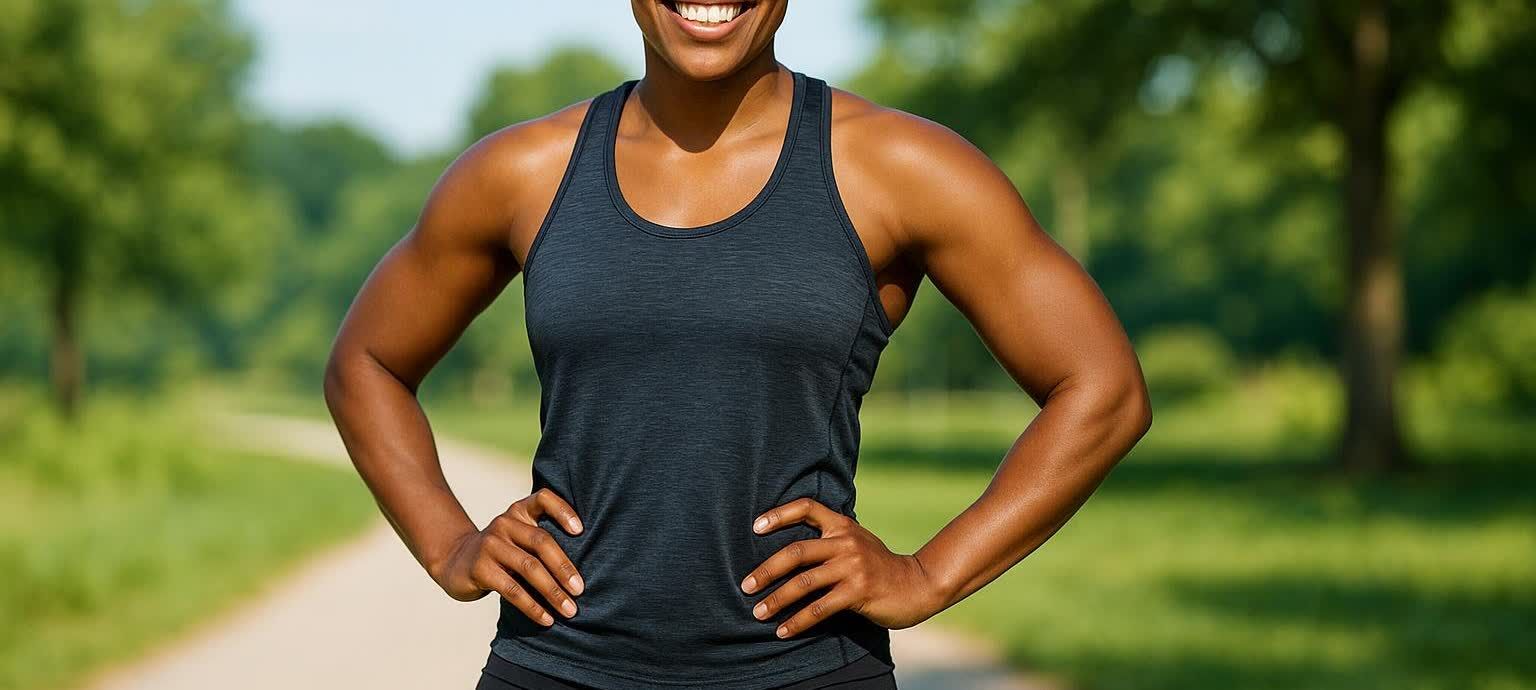
How to Get Toned Legs: Science-Backed Workouts, Nutrition, and Tracking
Summer shorts, fall half-marathons, or simply climbing stairs without burning out—whatever your motivation, achieving toned legs can make day-to-day life easier and look great in the process.
Yet the internet is flooded with 30-tip listicles and 5-minute videos that leave you guessing what really works. We’re cutting through the noise with research-backed programming, nutrition pointers, and smart tracking—so you can start seeing measurable progress. With consistent effort, many people notice changes in about 6–8 weeks, though individual timelines vary and depend on starting point, genetics, and adherence (see the FAQ below for more context).
New to exercise? Start with the beginner circuit just once per week, focus on form, and build from there. Consistency beats intensity.
What Does “Toned” Actually Mean?
Most people use toned as shorthand for “I can see muscle definition, but without the degree of hypertrophy seen in competitive bodybuilding.” Physiologically, that look comes from two factors working together:
- Increase or maintain lean muscle mass in the quads, hamstrings, glutes, and calves.
- Lower—or keep low—body-fat levels covering those muscles.
A BodySpec DEXA scan quantifies both parts, telling you precisely how much lean tissue and fat you carry in each leg—far more precise than scale weight or visual appearance alone.
Anatomy 101: Muscles That Shape Your Legs
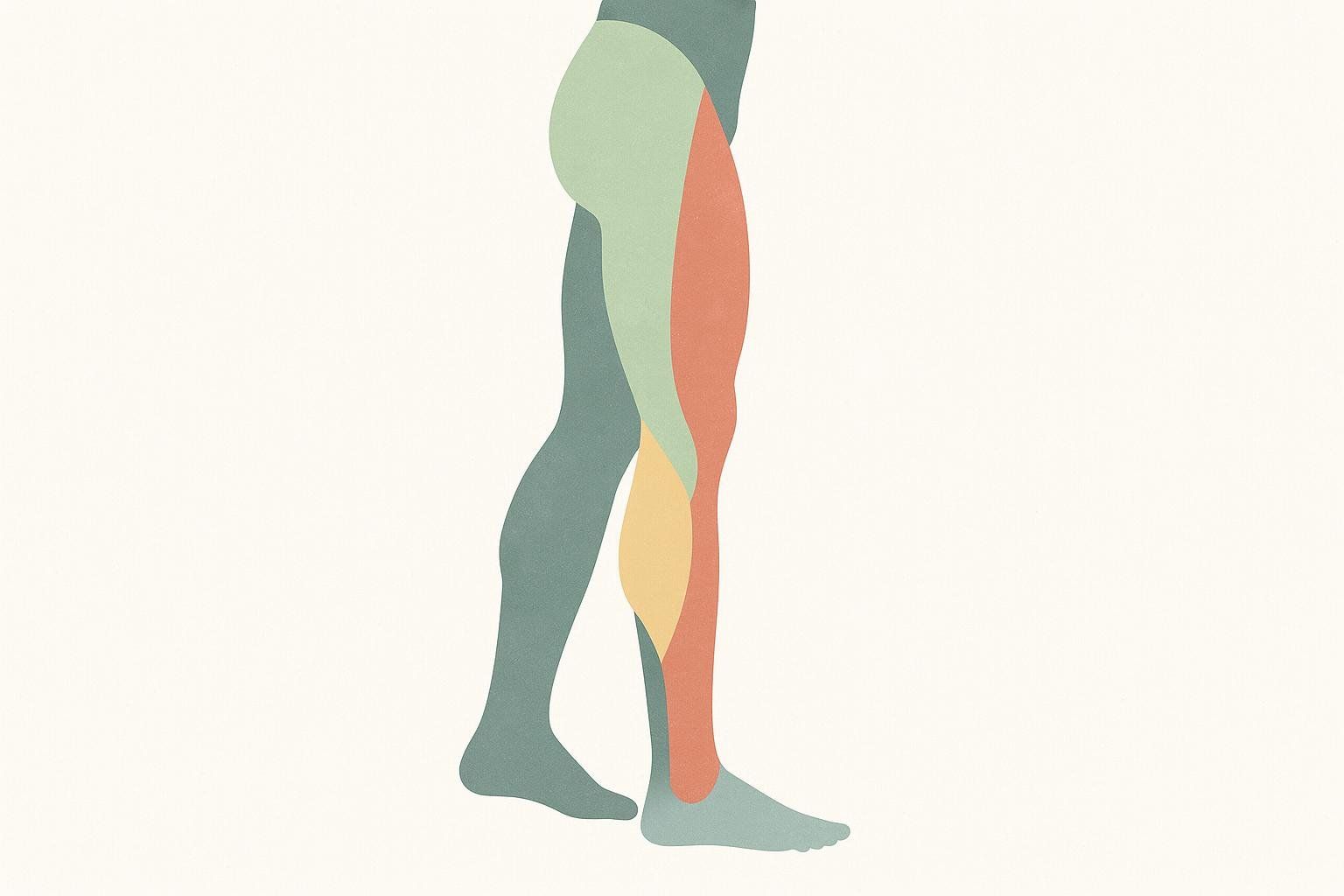
| Region | Primary Muscles | Why They Matter |
|---|---|---|
| Front Thigh | Quadriceps (rectus femoris, vastus lateralis/medialis/intermedius) | Knee extension, sprint acceleration |
| Back Thigh | Hamstrings (biceps femoris, semitendinosus, semimembranosus) | Hip extension, deceleration, injury prevention |
| Inner Thigh | Adductors (longus, brevis, magnus, gracilis) | Stabilize pelvis, balance knee tracking |
| Outer Hip | Gluteus medius/minimus, TFL | Lateral stability, reduces knee valgus |
| Calf | Gastrocnemius, soleus | Plantarflexion—crucial for walking, running, and jumping; also shapes the lower leg |
Understanding which muscle you’re targeting helps you troubleshoot plateaus and choose the right variations.
Tiered Leg-Toning Workouts
Medical disclaimer: Always speak with your doctor or a qualified healthcare professional before beginning any new exercise program, especially if you have pre-existing injuries, health conditions, or concerns.
The workouts below are arranged from beginner to advanced. Pick the level that matches your current ability, and perform it 2–3 times per week on non-consecutive days. Total beginners can start with one weekly session and add frequency only when soreness subsides.
Important: Always perform a 5–10 minute dynamic warm-up (e.g., leg swings, walking lunges, light jogging) before starting any of these routines to prepare your muscles and reduce injury risk.
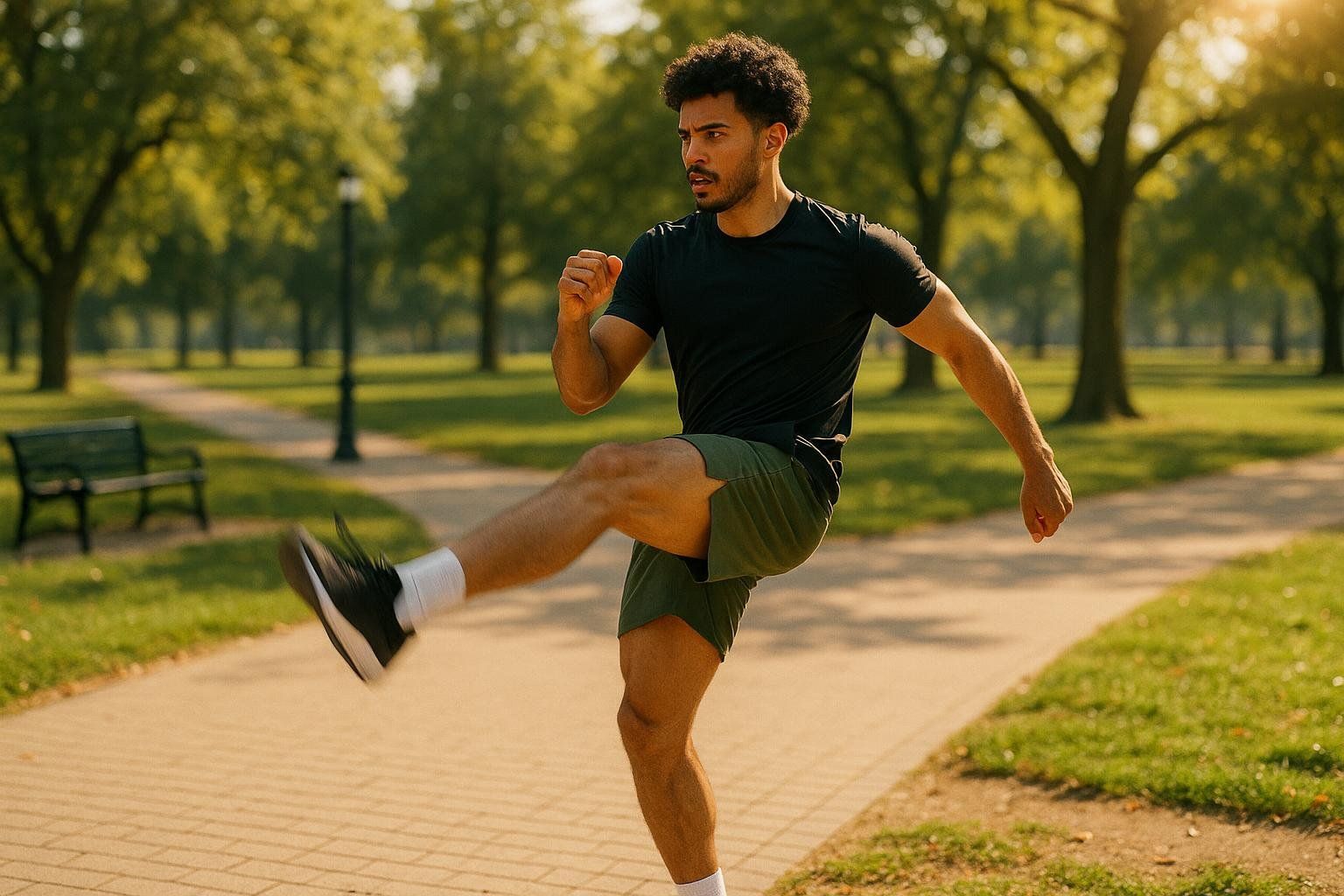
Level 1: Beginner 15-Minute No-Equipment Circuit (Apartment-Friendly)
Quick note on tempo: You’ll see three numbers like 2-1-2 next to each exercise. They show seconds for the lowering phase, pause, and lifting phase. Example: a “2-1-2” squat means lower for 2 seconds, hold for 1 second, then stand up in 2 seconds.
| Exercise | Reps | Tempo |
|---|---|---|
| Bodyweight Squat | 10–12 | 2-1-2 |
| Reverse Lunge (Alternating Sides) | 8–10 / side | 2-0-2 |
| Glute Bridge | 12–15 | 1-1-2 |
| Wall Sit | 20–30 sec | — |
| Standing Calf Raise | 12–15 | 2-1-2 |
Rest 30 seconds between moves; complete 2–3 rounds. If you need more recovery, extend rest to 60 seconds.
Joint-friendly switch: Use step-back lunges or chair-supported split squats if standard reverse lunges bother your knees.
Level 2: Dumbbell Strength Builder (25 Minutes)
These movements emphasize controlled form without a mandatory pause, so a 2-0-2 tempo (two seconds down, no pause, two seconds up) works well across the board. If you want extra muscle burn, add a one-second pause at the bottom.
| Exercise | Sets × Reps | Tempo | Intensity* |
|---|---|---|---|
| Goblet Squat | 3 × 12 | 2-0-2 | 60–70 % 1RM (RPE 7–8) |
| Bulgarian Split Squat | 3 × 10 / leg | 2-0-2 | 60–70 % 1RM (RPE 7–8) |
| Romanian Deadlift | 3 × 10 | 3-0-2 | 60–70 % 1RM (RPE 7–8) |
| Lateral Lunge | 3 × 12 / leg | 2-0-2 | 60–70 % 1RM (RPE 7–8) |
| Seated Calf Raise | 3 × 15 | 2-1-2 | 60–70 % 1RM (RPE 7–8) |
Increase load by ≈ 5 % when all reps feel easier than RPE 7.
Rest 60–75 seconds between sets.
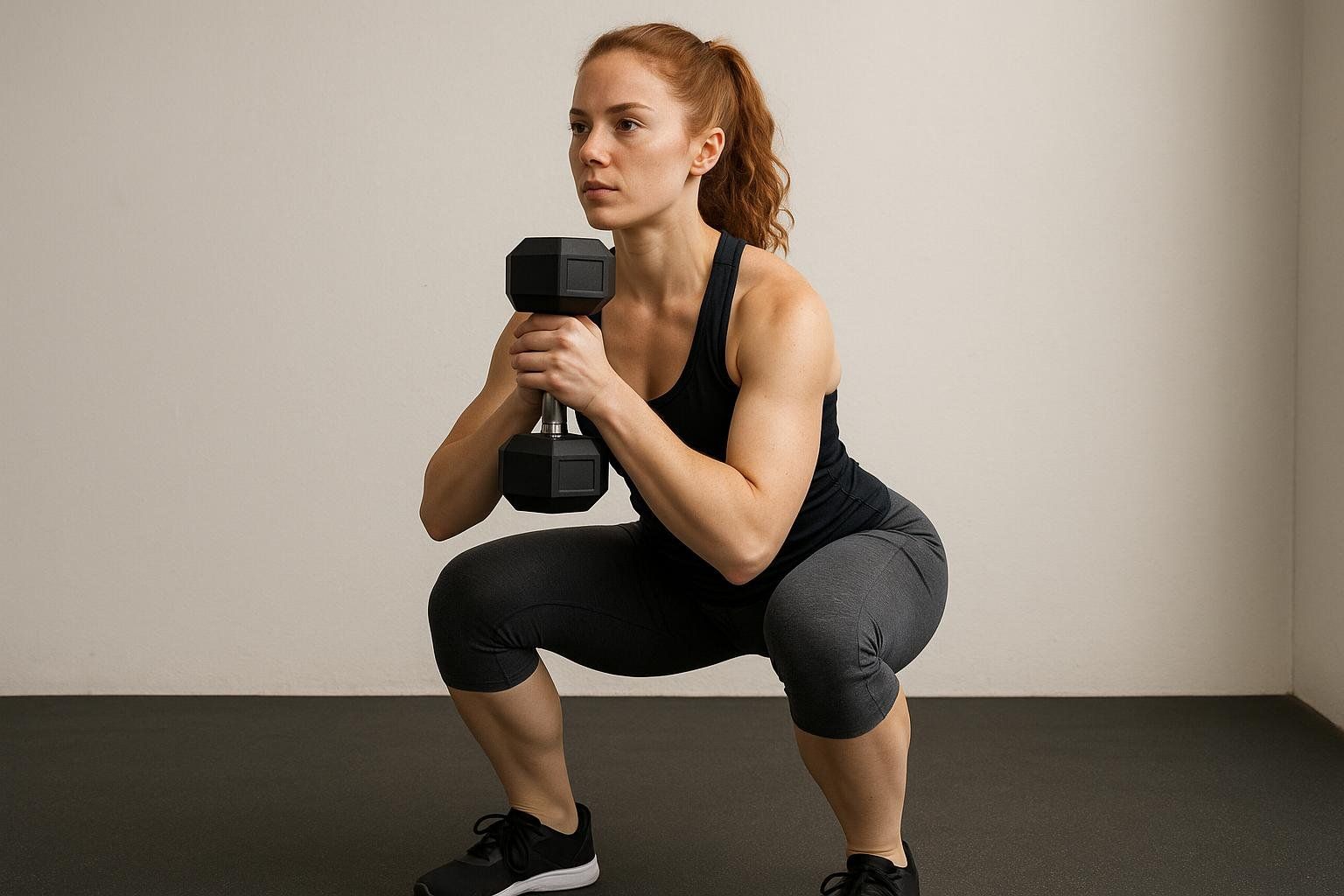
Level 3: Athletic Power & Stability (30 Minutes)
Advanced athletes need both controlled eccentrics and explosive concentrics. We’ll use a 2-0-X tempo, where X stands for “as fast as you can move with good form.”
| Exercise | Sets × Reps | Tempo | Notes |
|---|---|---|---|
| Barbell Front Squat | 4 × 6 | 2-0-X | 75 % 1RM (RPE 8–9) |
| Single-Leg Romanian Deadlift | 3 × 8 / side | 3-0-2 | Balance focus; 70 % 1RM (RPE 7–8) |
| Box Jump | 3 × 6 | — | Soft landing; maximal power |
| Walking Lunge w/ Overhead Plate | 3 × 12 / side | 2-0-X | Core integration; 60–70 % 1RM |
| Skater Hop | 3 × 20 sec | — | Lateral explosiveness |
Rest 90 seconds after strength sets; 45 seconds after plyos.
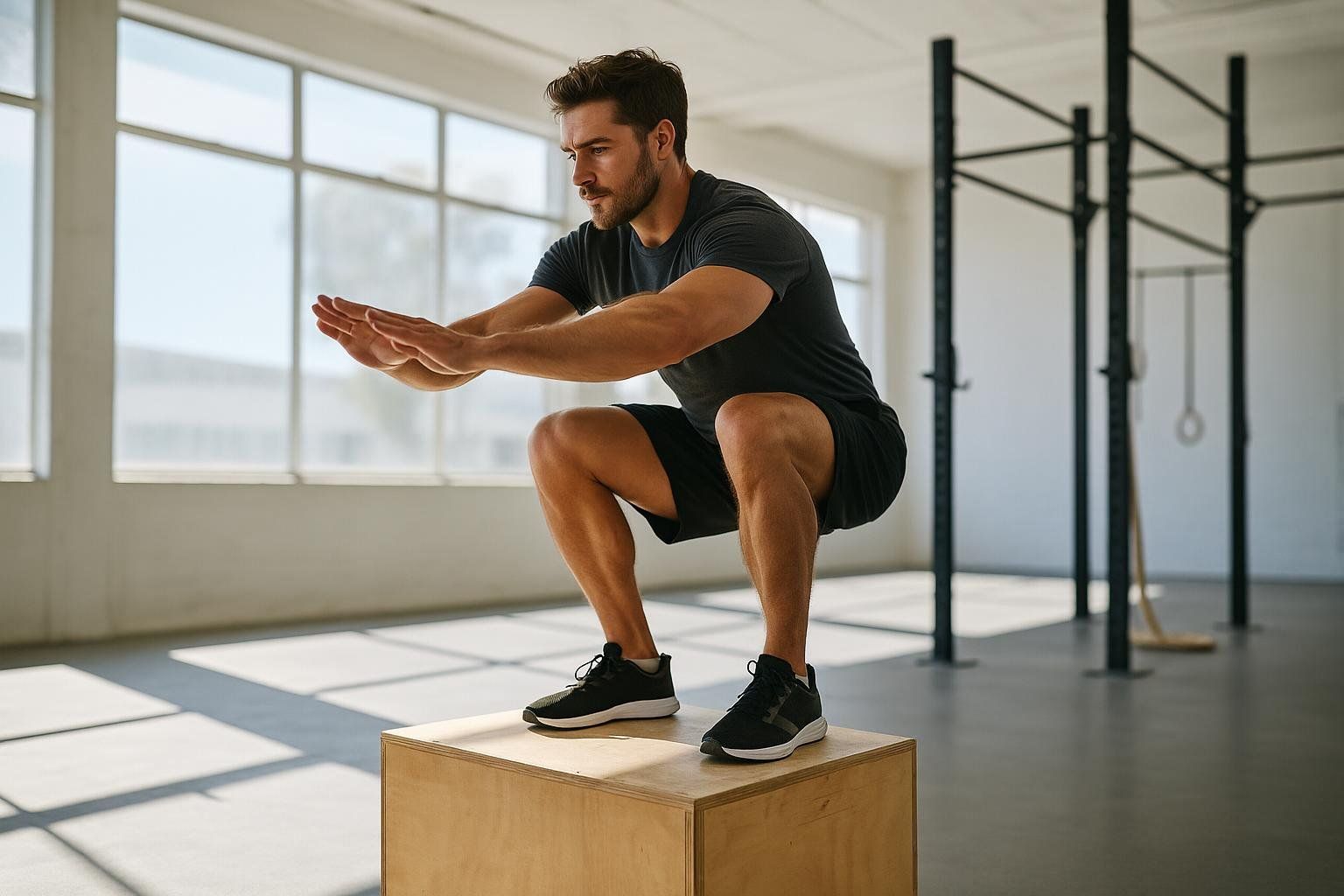
Progressive Overload, Recovery, and Injury Prevention
The American College of Sports Medicine outlines evidence-based parameters for building strength: train each major muscle group at least twice per week, and use loads of roughly 60–85 % 1RM for 8–12 reps—as detailed in the ACSM's comprehensive resistance-training guidelines.

Key factors for supporting recovery and sustaining training progress include:
- Sleep: 7–9 hours boosts muscle protein synthesis. See our post on The Importance of Rest Days.
- Mobility: Five-minute dynamic warm-ups and post-workout foam rolling reduce soreness (details in Mobility & Flexibility for Injury Prevention).
- Deload Weeks: Every 4–6 weeks, cut volume in half to let tissues adapt.
Nutrition for Lean, Defined Legs
Muscle growth and fat loss both hinge on protein and calorie balance:
- Protein: A study on protein intake for muscle growth shows intakes up to 1.6 g/kg body weight per day maximize muscle growth when paired with resistance training.
- Overall calories: Slight deficit (≈ 10–15 %) for fat loss; maintenance or slight surplus for muscle gain.
- Carbs & fats: Fuel heavy sessions with complex carbs (oats, quinoa) and maintain hormone health with healthy fats (avocado, olive oil).
For a deeper dive, see The Basics of Macros.
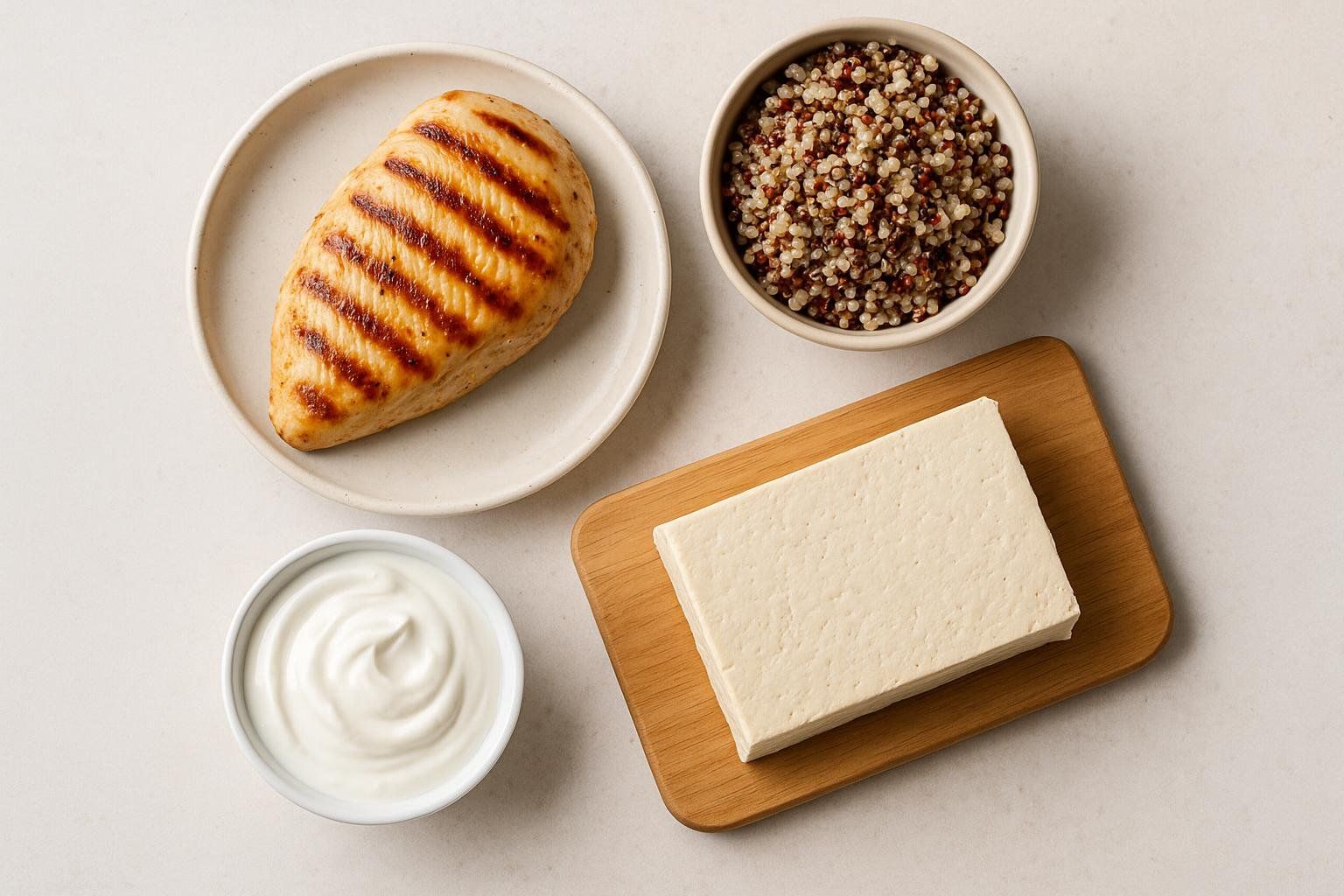
Tracking Progress: Why a BodySpec DEXA Scan Beats the Mirror
Mirrors can fool you—water retention and lighting change everything. A BodySpec DEXA scan provides:
- Leg-specific lean and fat mass (left vs. right) to monitor symmetry.
- Visceral-fat score—a hidden health risk no caliper measures.
- Baseline numbers to set realistic eight-week goals (e.g., +0.5 lb muscle, –1 lb fat per leg).
Schedule a scan before Week 1 and again at Week 8 to see the real story behind your results.
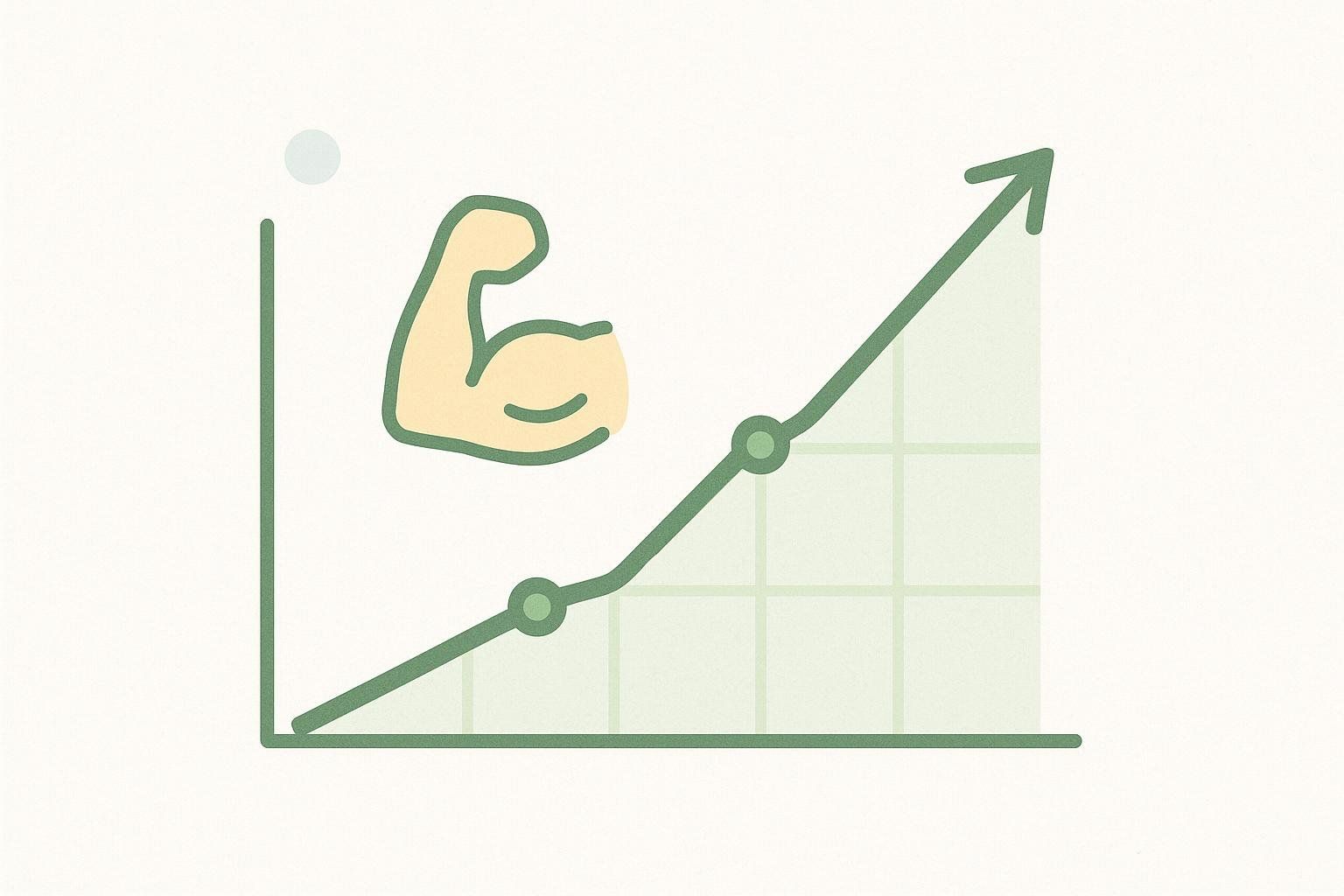
FAQ: People Also Ask About Toning Legs
How long does it take to get toned legs? Visible changes typically appear in 6–8 weeks with consistent training, adequate protein, and recovery; this timeframe aligns with improvements commonly reported by many of our DEXA clients.
Do high reps or heavy weights tone better? Both work; “tone” is about muscle plus low fat. Heavy weights build muscle efficiently; high-rep circuits burn more calories. Combine them for best results.
Can I tone my legs without bulking up? Yes. Stay near maintenance calories and prioritize 8–12-rep ranges. Muscle will become firmer without dramatic size increases.
Will cycling, running, or walking alone tone my legs? Cardio improves endurance but provides limited stimulus for muscle gain. Add two strength sessions for definition.
What if lunges hurt my knees? Try step-ups or glute bridges to train similar muscles without knee shear forces.
Your 3-Step Action Plan
- Pick a workout level (most beginners start with Level 1) and schedule it in your calendar.
- Book a BodySpec DEXA scan to set your baseline and track leg-specific changes.
- Commit to consistency—stick with the program for at least six weeks, adjusting load or reps only when form feels solid.
Your journey to stronger, more toned legs starts now.
